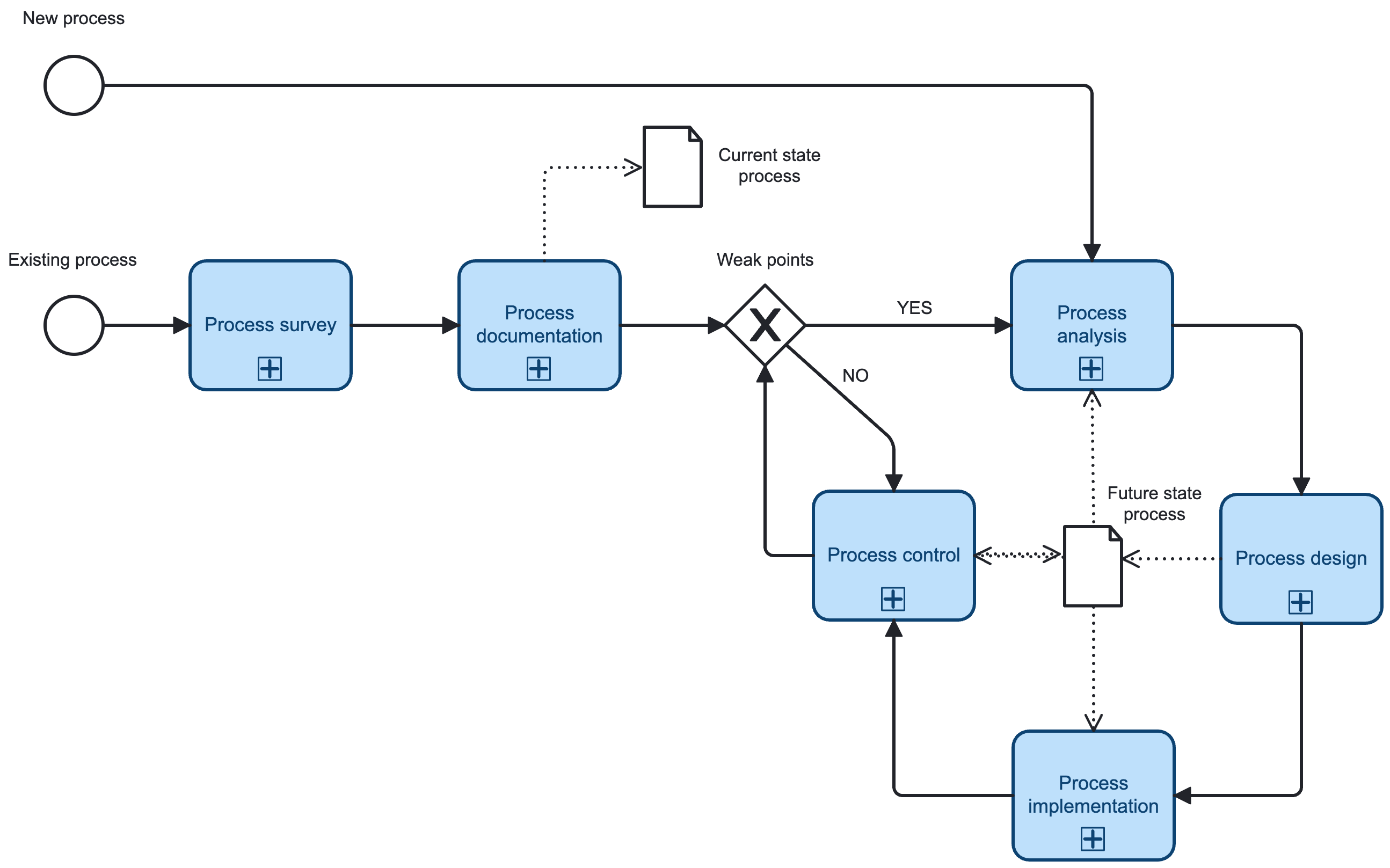
The power of BPMN 2.0
Communication isn’t always easy to pull off, especially with modern fusion teams. But a recent study of around 800 IT decision-makers and business leaders across the U.S. and Europe, on topics including:
- Why process automation remains vital to digital transformation,
- The challenges that prevent achieving automation goals,
- How process orchestration is driving automation maturity,
showed that 95% are investing in technologies that have standards-based modelling for collaboration between business and IT users.
Enabling clear and effective communication is especially important for organisations undertaking these initiatives. Because end-to-end business processes are complex, they often span various departments, people, and external systems. The complexity of the process and the diversity of technology running in the background can make it difficult to show exactly what’s happening.
What is BPMN?
Business Process Model and Notation (BPMN 2.0) was developed as a graphical notation to represent complex processes and address these challenges. It is maintained by the non-profit The Object Management Group (OMG) and employed by numerous organizations globally. The visual nature of BPMN enables greater collaboration between different teams, which isn’t surprising given that studies have shown that the human brain can process visuals 15.4 times faster than text.
With an open standard like BPMN, you’re able to:
– Get a clear vision of how a complex business process operates from end to end
– Streamline processes to improve performance and efficiency
– Reduce repetitive tasks and errors that employees oversee
– Enable greater innovation by helping business and IT collaborate effectively
Get everyone on the same page with process models
Creating visual process models helps everyone better understand, discuss, and remember processes. Because BPMN represents a process graphically, humans of different backgrounds and expertise can read the model.
Visually representing a complex process helps to break down barriers between what’s needed from the business and what’s technically feasible. It allows teams to agree on a chosen design before writing any code. From this foundation, teams can iteratively improve a process using data from the process itself.
Bring visibility to complex processes
Most employees have a limited understanding of the processes and workflows that keep their organization running. Their view typically covers their specific area of expertise, resulting in a fragmented picture of a process that can hinder collaboration and innovation.
BPMN tools should offer various ways to work on and share a process model to better enable cross-team collaboration. With the rise of distributed teams, having ways to design a model remotely (and asynchronously!) can greatly impact productivity and creativity.
Other examples include embedding a model directly on an internal webpage so everyone can understand how workflows run or sharing a process health dashboard. Providing an artifact also ensures that knowledge isn’t lost if the person who created the processes moves to a different team or business unit.
